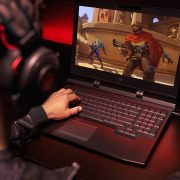The latest version of the Dell XPS 13 brings Intel’s advanced 10-th Generation processors to the venerable ultraportable notebook. (It’s made up of the processors that are dubbed “Comet Lake,” distinct from the 10th Generation “Ice Lake” processors in the brand-new Dell XPS 13 2-in-1.) It’s all the rest.
The device, including its exterior style to its stunning 4K screen, is so great that Dell has decided to leave the machine largely unaltered like its predecessors. When we reviewed it back in January, its predecessor indeed earned an unheard-of five-star score.
The current model, which retails at $1,176 and will eventually reach $1,764 when tested (fitted out with a 6-core Comet Lake chip), is co-starring Razer Blade Stealth 13. Razer Blade Stealth 13 is one of two top ultraportable laptops available.
XPS Laptops Vs. XPS 2-in-1s
Dell’s most popular XPS ultraportable computers are available in standard clamshell elements or 2-in-1 convertible models that have hinges that rotate that allow them to convert into tablets or to be used to act as tents or easels tables for more comfortable video viewing.
There was a time when you had to pay a considerable weight and volume penalty when you picked an XPS 2-in-1 model over a traditional laptop of the same size. This isn’t the case anymore, certainly not with the latest 13.2-inch Dell XPS lineup.
This clamshell-style XPS 13 reviewed here is identical to its predecessor in physical terms. The dimensions are 0.46 by 11.9 by 7.8 inches (HWD) and weigh 2.7 pounds. For more about this machine click here. Compare these measurements to the XPS 13 2-in-1, which weighs 2.9 tons and 0.51 per 11.7 in 8.2 inches. The tiny difference shouldn’t be a problem for most buyers since both are attractive, sleek ultraportables.
This small distinction is one of the main reasons we’re not rating our XPS 13 five-star rating this time. It’s still fantastic; however, unless you require the extra processing power that comes with the Comet Lake processor in our review unit (and most users don’t),, the compact clamshell XPS 13 isn’t unquestionably better than its more versatile 2-in-1 counterpart for all buyers.
The Configuration Options (Dell XPS 13)
The XPS 13 comes in a variety of three different colour schemes. You can pick an Arctic White interior with either the Frost or Rose Gold exterior.
The two colors are trendy compared to the traditional third option showcased by our test model: Platinum Silver with a black carbon-fiber interior. To experience the difference to yourself, take a look at our gallery of images of the model we have reviewed with the earlier model, which Arctic White dressed.
Alongside the six-core/12thread Intel Core i7-10710U processor, Our review unit includes 16GB of memory with 2,133MHz as well as the 500GB PCI Express NVMe SSD, as well as the 13.3-inch touchscreen. (The standard resolution for the display is 4K, which is 3,840 x 2,160 pixels.) It’s a fantastic price for the specs in comparison to similar Dell XPS models, which can be quite expensive.
A base version, in turn, includes the Intel Core i3-10110U Comet Lake CPU (packing just two cores and four threads) with an SSD of 128GB with 4GB of memory and a 13.3-inch non-touch screen with full-HD resolution (1080p) native resolution. (That’s 1920 x 1080 pixels.)
There are various other options for configuration, such as the Core i5 CPU with a 1080p display that comes with touchscreen support and storage drives that go up to a massive 2TB SSD. There’s something for everyone; however, I think the configuration of our test device to be in the ideal configuration.
A Gorgeous Display, Robust Connectivity (Dell XPS 13)
Apart from the state-of-the-art Comet Lake processor, the XPS 13’s main characteristic is the option of the 4K display. Its 1,500:1 contrast ratio with a maximum of 400nits brightness and the ability to show 100 percent of the sRGB spectrum of colors result in sharp text and vivid colors, but they’re typical specs for this kind of laptop display.
The most notable feature can be the coating of anti-reflective that’s applied onto the glossy screen that I noticed reduced the amount of reflection caused by sunlight but did not affect the display’s brightness. For more information check this article. It’s a typical negative effect that comes with anti-reflective matte displays.
The XPS 13’s display is also notable for its slim border. It has an 80 percent ratio of screen-to-body that is less than the 90 percent that we’ve seen on other laptops, yet it does have a high-end appearance.
Best Part
Additionally, the top bezel is still adequate to accommodate the webcam, a tiny 2.25mm lens that can record HD video at 720p, but does not have Windows Hello face recognition. Some years ago, XPS 13 models of older models couldn’t fit cameras into their slim top bezels, which is why Dell put them in the bottom of their screen.
They took infuriating images and videos of the user’s fingertips and nostril scapes. It was a brief moment of tech naiveté, but it’s over with, and with Dell expanding its efforts to reduce the size of cameras on the first quarter of 2019’s XPS 13, returning the webcam to its proper place.
On the left side of the XPS 13, you’ll find an actual locking port as well as two USB Type C ports, each of which supports Thunderbolt 3 transfer speeds of up to 40GBps. The other side houses another USB Type-C connector (without Thunderbolt 3, but with DisplayPort Video output) and a MicroSD slot, as well as a 3.5mm headphone/microphone combination jack.
This is a fairly solid connectivity feature for slim laptops. Other laptops in the XPS 13’s category have 13 inches of screen size. Apple MacBook Pro ($1,499.99 at Best Buy), which has only 2 Thunderbolt 3 ports and an audio jack in its basic configuration.
Best Part
The only port that could cause an issue to XPS 13 owners is a traditional USB Type-A port, but the technology world is moving towards USB Type-C, which means it’s not a huge issue. Dell cleverly incorporates a Type C-to-A adapter as part of the setup I’m looking at.
As a nod to the contemporary look that is the Comet Lake CPU and USB Type-C ports and USB Type-C ports, the XPS 13 also includes Bluetooth 5.0 and support for the most recent 802.11ax (Wi-Fi 6) wireless network standard.
Wi-Fi 6 routers exist but are scarce and infrequent, and if you’re planning for a switch to Wi-Fi 6 over the next few years or so, then you’ll be able to upgrade with the XPS 13 will be able to benefit from the higher throughput speed of Wi-Fi 6 fully.
The most disappointing parts that the XPS 13’s layouts are the touchscreen and keyboard. The keyboard offers a small 1.33mm for vertical mobility as well as the pad is accurate and made from glass but somewhat small compared to the large pads found on models such as those of the Apple MacBook Pro and the Razer Blade Stealth.
Gaming vs. Productivity
While it’s true that the XPS 13 performed the best in our GPU-accelerated Photoshop test, however, it’s the Blade Stealth 13 has an incredibly robust graphics system over it does the Dell XPS 13 does.
It’s an exclusive GeForce chip. This Nvidia GeForce GTX 1650-equipped Razer laptop is superior to that of the XPS 13 for games that require graphics such as this Superposition Gaming Simulation. (Superposition simulates rendering and panning around an intricate 3D model and evaluates how well the system performs.)
Additionally of interest are the impressive graphics numbers released in Dell XPS 13 2-in-1 Dell XPS 13 2-in-1 versus the XPS 13. In our first tests of the Core i7 Ice Lake before the chip’s release in the market, it was evident that the new GPU silicon used on the Ice Lake chips, paired with high-speed system memory, will bring new energy to the integrated Intel graphics. It’s evidence in abundance. Consider, for instance, our findings from the UL 3DMark test benchmark.
The chart is abridged since this Razer Blade Stealth was experiencing driver issues when it was tested with 3DMark. However, the main item in this chart will be an XPS 13 Comet Lake versus the XPS 13 2-in-1 Ice Lake.
It’s worth noting that the Ice Lake chip’s Iris Plus Graphics isn’t nearly as good as the score of UHD Graphics on the Comet Lake chip, but it’s certainly not too much different.
Best Part
If you’re a lover of the XPS 13 form factor, but the performance of the integrated graphics is more important to you than processor power, it could make a difference in your favor. Ice Lake-based XPS 13 2-in-1 over a Comet Lake-based clamshell.
When I was running the tests, I could hear the cooling fan of the XPS 13 increase its speed to the point that was audible in the background of a bustling office. It’s not a silent machine with heavy loads, and however, the cooling is aiding it in achieving remarkable computing achievements.
With 11 hours and 41 mins of battery time as calculated in our video rundown test, the XPS 13 is merely average for its class. It’s likely to last for the entire day without an electrical outlet. However, its power-hungry display in 4K hinders it from the impressive battery life of models such as Spectre x360 13 and the MacBook Pro.
Pick Your Power
If you’re a moderately PC player who appreciates slim and light 13-inch-class designs, then this Razer Blade Stealth 13 is the best choice, with its powerful graphics processor, slim design, and superior touchpad.
If you typically utilize your computer for simple tasks, and you would like the ability to use it as a tent, or an easel for watching videos and gaming, it’s the XPS 13 2-in-1 model is your ideal choice.
The same is true for the rest of us, however, especially power users who require as much raw performance from multimedia workflows as is possible but don’t want to sacrifice a heavier and bulkier display–the 7390 version of the iconic Dell XPS 13 is the top ultraportable that you can purchase today. The six cores that make up this Comet Lake test configuration bring powerful performance to an old well-tested design.
From 2021, Amelia R.Waters has been in charge of thelaptopsguide.com’s writer, editorial, and production. Amelia R.Waters has been a programmer for several LAPTOP benchmarks. This includes the LAPTOP Battery Test. Amelia R.Waters holds a master’s in English from NYU.



